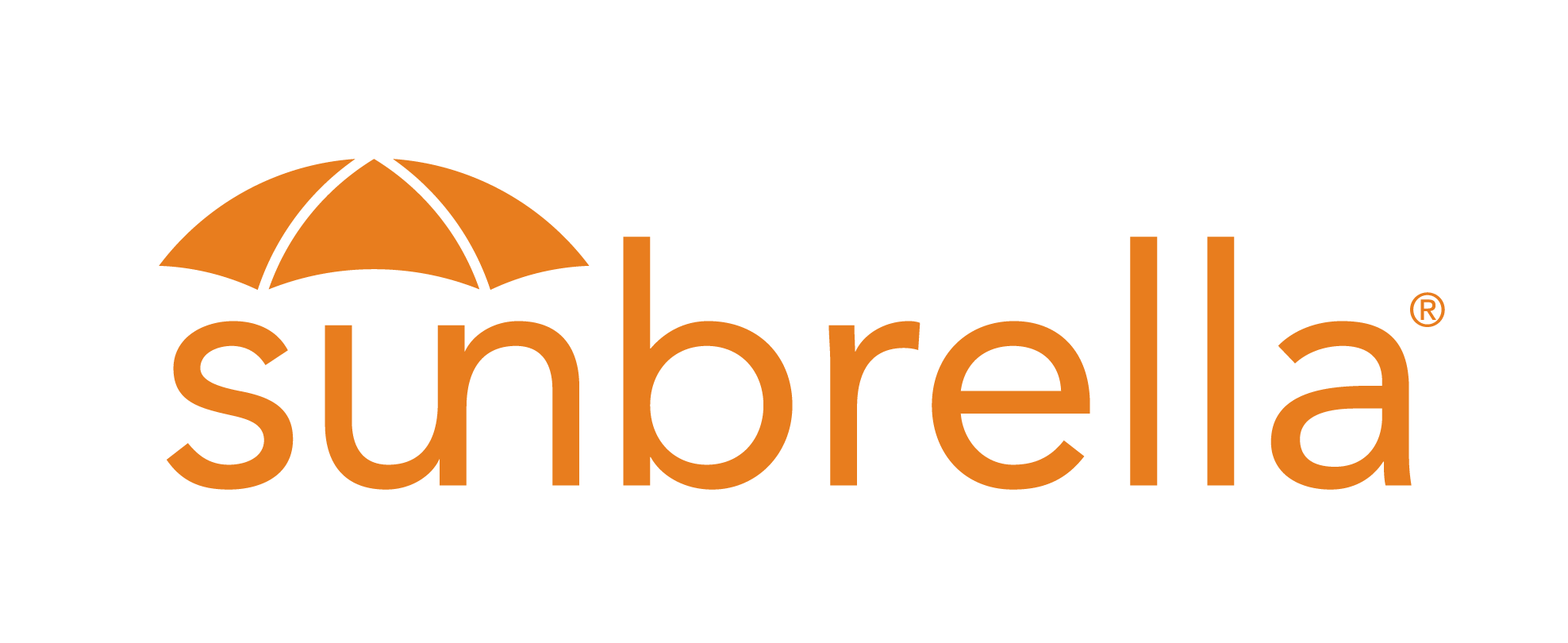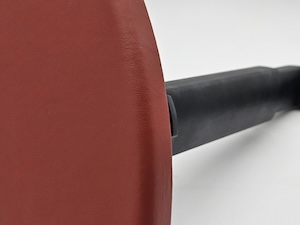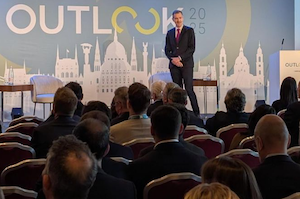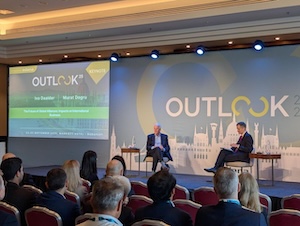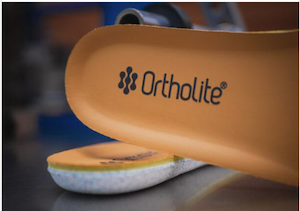 TEMPE, Ariz. — October 1, 2025 — Economic activity in the manufacturing sector contracted in September for the seventh consecutive month, following a two-month expansion preceded by 26 straight months of contraction, say the nation’s supply executives in the latest ISM® Manufacturing PMI® Report.
TEMPE, Ariz. — October 1, 2025 — Economic activity in the manufacturing sector contracted in September for the seventh consecutive month, following a two-month expansion preceded by 26 straight months of contraction, say the nation’s supply executives in the latest ISM® Manufacturing PMI® Report.
The report was issued today by Susan Spence, MBA, Chair of the Institute for Supply Management® (ISM®) Manufacturing Business Survey Committee.
“The Manufacturing PMI® registered 49.1 percent in September, a 0.4-percentage point increase compared to the reading of 48.7 percent recorded in August. The overall economy continued in expansion for the 65th month after one month of contraction in April 2020. (A Manufacturing PMI® above 42.3 percent, over a period of time, generally indicates an expansion of the overall economy.) The New Orders Index contracted in September following one month of growth; the figure of 48.9 percent is 2.5 percentage points lower than the 51.4 percent recorded in August. The September reading of the Production Index (51 percent) is 3.2 percentage points higher than August’s figure of 47.8 percent. The Prices Index remained in expansion (or ‘increasing’ territory), registering 61.9 percent, down 1.8 percentage points compared to the reading of 63.7 percent reported in August. The Backlog of Orders Index registered 46.2 percent, up 1.5 percentage points compared to the 44.7 percent recorded in August. The Employment Index registered 45.3 percent, up 1.5 percentage points from August’s figure of 43.8 percent.
“The Supplier Deliveries Index indicated slower delivery performance for the second consecutive month after one month in ‘faster’ territory, which was preceded by seven consecutive months in ‘slower’ territory. The reading of 52.6 percent is up 1.3 percentage points from the 51.3 percent recorded in August. (Supplier Deliveries is the only ISM® PMI® Reports index that is inversed; a reading of above 50 percent indicates slower deliveries, which is typical as the economy improves and customer demand increases.) The Inventories Index registered 47.7 percent, down 1.7 percentage points compared to August’s reading of 49.4 percent.
“The New Export Orders Index reading of 43 percent is 4.6 percentage points lower than the reading of 47.6 percent registered in August. The Imports Index registered 44.7 percent, 1.3 percentage points lower or than August’s reading of 46 percent.”
Spence continues, “In September, U.S. manufacturing activity contracted at a slightly slower rate, with production growth the biggest factor in the 0.4-percentage point gain of the Manufacturing PMI®. However, the combined drops in the New Orders and Inventories indexes (4.2 percentage points) exceeded the increase in the Production Index (3.2), rendering the Manufacturing PMI® improvement negligible. Last month’s increase in new orders (an index gain of 4.3 percentage points from July to August) seems to have flowed through to production but does not appear to be sustainable given the subsequent drop in new orders in September.
“One of the four demand indicators improved, with the Backlog of Orders Index showing a gain of 1.5 percentage points (which could be due to August’s increase in new orders, cited above), while the New Orders, New Export Orders and Customers’ Inventories indexes contracted at faster rates. A ‘too low’ status for the Customers’ Inventories Index is usually considered positive for future production.
“Regarding output, the Production and Employment indexes improved, though 64 percent of panelists’ comments still indicated that managing head count is still the norm at their companies, as opposed to hiring.
“Finally, inputs (defined as supplier deliveries, inventories, prices and imports), on net, moved further into contraction territory. The Supplier Deliveries Index indicated slower deliveries, the Inventories Index worsened, and the Prices Index continued to increase, but at a slower rate. The Imports Index moved further into contraction.
“Looking at the manufacturing economy, 67 percent of the sector’s gross domestic product (GDP) contracted in September, down from 69 percent in August. Twenty-eight percent of GDP is strongly contracting (registering a composite PMI® of 45 percent or lower), up from 4 percent in August. The share of sector GDP with a PMI® at or below 45 percent is a good metric to gauge overall manufacturing weakness. Of the six largest manufacturing industries, only one (Petroleum & Coal Products) expanded in September, compared to two in August,” says Spence.
The five manufacturing industries reporting growth in September are: Petroleum & Coal Products; Primary Metals; Textile Mills; Fabricated Metal Products; and Miscellaneous Manufacturing. The 11 industries reporting contraction in September — in the following order — are: Wood Products; Apparel, Leather & Allied Products; Plastics & Rubber Products; Paper Products; Furniture & Related Products; Chemical Products; Electrical Equipment, Appliances & Components; Transportation Equipment; Nonmetallic Mineral Products; Machinery; and Computer & Electronic Products.
WHAT RESPONDENTS ARE SAYING
“Business continues to be severely depressed. Profits are down and extreme taxes (tariffs) are being shouldered by all companies in our space. We have increased price pressures both to our inputs and customer outputs as companies are starting to pass on tariffs via surcharges, raising prices up to 20 percent. The addition of the derivative steel and aluminum tariffs in the middle of the month — with no announcement — was devastating. Interest-rate lowering or the ‘One Big Beautiful Bill’ will not impact our business, as all capital projects are on hold until there is some level of certainty and customers start to place orders for new equipment again. We believe we are in a stagflation period where prices are up but orders are down due to tariff policy, and again, customers are not willing to pay the higher prices, so they are just not buying. Continuing to find ways to reduce overhead, which means letting go of experienced workers.” (Transportation Equipment)
“The tariffs are still causing issues with imported goods into the U.S. In addition to the cost concerns, product is being held up at borders due to documentation issues. The inflation issues continue; low volumes are a constant concern. The European region is not improving as we had expected, causing further concern for long-term business viability.” (Chemical Products)
“Ongoing macroeconomic conditions highlighted by interest-rate management and tariffs continue to impact customer purchasing decisions, resulting in subdued production rates and growing cost concerns on direct material and operations.” (Machinery)
“Lead times have slightly normalized, but tariffs continue to drive additional spend.” (Petroleum & Coal Products)
“Customer orders are depressed for heavy machinery because tariffs are so impactful to high-end capital equipment. Revenue expectations are flat for the rest of 2025, with no outlook to improve in 2026.” (Electrical Equipment, Appliances & Components)
“Current business conditions remain volatile, with geopolitical tensions, weather disruptions and shifting trade policies driving uncertainty in agricultural commodities. Oils remain sensitive to biofuel demand and global production. Inflation and evolving consumer trends add further complexity. To manage this, we are emphasizing supplier diversification, long-term contracts and formula-based pricing to balance cost stability with flexibility.” (Food, Beverage & Tobacco Products)
“The semiconductor industry is being impacted by high tariff prices on parts from Korea, China and Europe. Our industry is at a low point right now as we race to get new nanotechnology in the U.S.” (Computer & Electronic Products)
“Business is slowing down. Order books are softening as customers push orders out. Seems to be stemming from concerns about the direction of the U.S. economy.” (Plastics & Rubber Products)
“Tariffs still affecting vast amounts of increases in hardware, Al (artificial intelligence) and stainless steel. MRO (maintenance, repair and operating) products have continually increased, and the slowdown in agriculture has had stark impacts on bottom lines for raw materials.” (Fabricated Metal Products)
“Steel tariffs are killing us.” (Miscellaneous Manufacturing)
| MANUFACTURING AT A GLANCE
September 2025 |
| Index |
Series
Index
Sep |
Series
Index
Aug |
Percentage
Point
Change |
Direction |
Rate of
Change |
Trend*
(Months) |
| Manufacturing PMI® |
49.1 |
48.7 |
+0.4 |
Contracting |
Slower |
7 |
| New Orders |
48.9 |
51.4 |
-2.5 |
Contracting |
From Growing |
1 |
| Production |
51.0 |
47.8 |
+3.2 |
Growing |
From Contracting |
1 |
| Employment |
45.3 |
43.8 |
+1.5 |
Contracting |
Slower |
8 |
| Supplier Deliveries |
52.6 |
51.3 |
+1.3 |
Slowing |
Faster |
2 |
| Inventories |
47.7 |
49.4 |
-1.7 |
Contracting |
Faster |
5 |
| Customers’ Inventories |
43.7 |
44.6 |
-0.9 |
Too Low |
Faster |
12 |
| Prices |
61.9 |
63.7 |
-1.8 |
Increasing |
Slower |
12 |
| Backlog of Orders |
46.2 |
44.7 |
+1.5 |
Contracting |
Slower |
36 |
| New Export Orders |
43.0 |
47.6 |
-4.6 |
Contracting |
Faster |
7 |
| Imports |
44.7 |
46.0 |
-1.3 |
Contracting |
Faster |
6 |
| OVERALL ECONOMY |
Growing |
Faster |
65 |
| Manufacturing Sector |
Contracting |
Slower |
7 |
|
|
|
|
|
|
|
|
|
|
|
|
|
|
|
|
|
|
|
|
ISM ® Manufacturing PMI ® Report data is seasonally adjusted for the New Orders, Production, Employment and Inventories indexes.
*Number of months moving in current direction.
COMMODITIES REPORTED UP/DOWN IN PRICE AND IN SHORT SUPPLY
Commodities Up in Price
Aluminum (22); Copper (3); Copper Products (3); Corn; Corrugate; Electrical Components (8); Electronic Components; Metal Based Products; Steel* (8); Steel — Stainless (7); and Steel Products (7).
Commodities Down in Price
Polypropylene Resin; and Steel* (2).
Commodities in Short Supply
Electrical Components (3); Electronic Components (7), Labor; Rare Earth Magnets; and Semiconductors.
Note: The number of consecutive months the commodity is listed is indicated after each item.
*Indicates both up and down in price.
SEPTEMBER 2025 MANUFACTURING INDEX SUMMARIES
Manufacturing PMI ®
The U.S. manufacturing sector contracted in September for the seventh consecutive month after two months of expansion preceded by 26 months of contraction. “The Manufacturing PMI® registered 49.1 percent in September, a 0.4-percentage point increase compared to the 48.7 percent recorded in August. Of the five subindexes that directly factor into the Manufacturing PMI®, two (Production and Supplier Deliveries) are in expansion territory, the same number as in August. After one month in contraction territory, the Production Index gained 3.2 percentage points, putting it back in expansion. New Orders returned to contraction, the Employment Index increased but remains in contraction territory, and the Inventories Index had a faster rate of contraction. Only one of the six biggest manufacturing industries (Petroleum & Coal Products) registered growth in September,” says Spence. A reading above 50 percent indicates that the manufacturing sector is generally expanding; below 50 percent indicates that it is generally contracting.
A Manufacturing PMI® above 42.3 percent, over a period of time, generally indicates an expansion of the overall economy. Therefore, the September Manufacturing PMI® indicates the overall economy grew for the 65th straight month after contracting in April 2020. “The past relationship between the Manufacturing PMI® and the overall economy indicates that the September reading (49.1 percent) corresponds to a change of plus 1.9 percent in real gross domestic product (GDP) on an annualized basis,” says Spence.
THE LAST 12 MONTHS
| Month |
Manufacturing
PMI® |
Month |
Manufacturing
PMI® |
| Sep 2025 |
49.1 |
Mar 2025 |
49.0 |
| Aug 2025 |
48.7 |
Feb 2025 |
50.3 |
| Jul 2025 |
48.0 |
Jan 2025 |
50.9 |
| Jun 2025 |
49.0 |
Dec 2024 |
49.2 |
| May 2025 |
48.5 |
Nov 2024 |
48.4 |
| Apr 2025 |
48.7 |
Oct 2024 |
46.9 |
| Average for 12 months – 48.9
High – 50.9
Low – 46.9 |
New Orders
ISM®’s New Orders Index contracted in September after one month in expansion, registering 48.9 percent, a decrease of 2.5 percentage points compared to August’s figure of 51.4 percent. This reading is below the 12-month moving average (49 percent) for the New Orders Index, which hasn’t indicated consistent growth since a 24-month streak of expansion ended in May 2022. “Of the six largest manufacturing sectors, none reported increased new orders. For every positive comment about new orders, there were 1.6 comments expressing concern about near-term demand, primarily driven by tariff costs and uncertainty,” says Spence. A New Orders Index above 52.1 percent, over time, is generally consistent with an increase in the Census Bureau’s series on manufacturing orders (in constant 2000 dollars).
The six manufacturing industries that reported growth in new orders in September — in the following order — are: Textile Mills; Furniture & Related Products; Fabricated Metal Products; Miscellaneous Manufacturing; Primary Metals; and Electrical Equipment, Appliances & Components. The nine industries reporting a decline in new orders in September, in order, are: Wood Products; Nonmetallic Mineral Products; Plastics & Rubber Products; Paper Products; Transportation Equipment; Computer & Electronic Products; Machinery; Food, Beverage & Tobacco Products; and Chemical Products.
| New Orders |
%Higher |
%Same |
%Lower |
Net |
Index |
| Sep 2025 |
18.6 |
56.5 |
24.9 |
-6.3 |
48.9 |
| Aug 2025 |
24.7 |
52.6 |
22.7 |
+2.0 |
51.4 |
| Jul 2025 |
18.8 |
55.3 |
25.9 |
-7.1 |
47.1 |
| Jun 2025 |
20.5 |
52.2 |
27.3 |
-6.8 |
46.4 |
Production
The Production Index expanded in September, registering 51 percent, 3.2 percentage points higher than the August reading of 47.8 percent. “Of the six largest manufacturing sectors, four (Petroleum & Coal Products; Food, Beverage & Tobacco Products; Computer & Electronic Products; and Machinery) reported increased production. Panelists had a 1-to-2 ratio of positive to negative comments regarding output,” says Spence. An index above 52.1 percent, over time, is generally consistent with an increase in the Federal Reserve Board’s Industrial Production figures.
The eight industries reporting growth in production during the month of September — in the following order — are: Textile Mills; Petroleum & Coal Products; Primary Metals; Miscellaneous Manufacturing; Food, Beverage & Tobacco Products; Fabricated Metal Products; Computer & Electronic Products; and Machinery. The six industries reporting a decrease in production in September, in order, are: Electrical Equipment, Appliances & Components; Wood Products; Paper Products; Nonmetallic Mineral Products; Chemical Products; and Transportation Equipment.
| Production |
%Higher |
%Same |
%Lower |
Net |
Index |
| Sep 2025 |
19.0 |
60.5 |
20.5 |
-1.5 |
51.0 |
| Aug 2025 |
16.6 |
62.3 |
21.1 |
-4.5 |
47.8 |
| Jul 2025 |
20.1 |
60.7 |
19.2 |
+0.9 |
51.4 |
| Jun 2025 |
20.7 |
60.6 |
18.7 |
+2.0 |
50.3 |
Employment
ISM®’s Employment Index registered 45.3 percent in September, 1.5 percentage points higher than August’s reading of 43.8 percent. “The index posted its eighth consecutive month of contraction after expanding in January, with seven straight months of contraction before that. Since May 2022, the Employment Index has contracted in 34 of 41 months. Of the six big manufacturing sectors, none reported higher levels of employment in September. For every comment on hiring, there were three on reducing head counts as companies continued to focus on accelerating staff reductions due to uncertain near- to mid-term demand. Layoffs and not filling open positions remain the main head-count management strategies,” says Spence. An Employment Index above 50.3 percent, over time, is generally consistent with an increase in the Bureau of Labor Statistics (BLS) data on manufacturing employment.
Of the 18 manufacturing industries, one reported employment growth in September: Nonmetallic Mineral Products. The 14 industries reporting a decrease in employment in September, in the following order, are: Wood Products; Furniture & Related Products; Textile Mills; Electrical Equipment, Appliances & Components; Plastics & Rubber Products; Computer & Electronic Products; Paper Products; Chemical Products; Transportation Equipment; Food, Beverage & Tobacco Products; Primary Metals; Machinery; Miscellaneous Manufacturing; and Fabricated Metal Products.
| Employment |
%Higher |
%Same |
%Lower |
Net |
Index |
| Sep 2025 |
11.1 |
64.5 |
24.4 |
-13.3 |
45.3 |
| Aug 2025 |
9.4 |
68.2 |
22.4 |
-13.0 |
43.8 |
| Jul 2025 |
12.6 |
62.4 |
25.0 |
-12.4 |
43.4 |
| Jun 2025 |
10.4 |
72.1 |
17.5 |
-7.1 |
45.0 |
Supplier Deliveries†
For the second consecutive month, delivery performance of suppliers to manufacturing organizations was slower in September, after one month of faster deliveries preceded by seven months of index readings in “slowing” territory. The Supplier Deliveries Index registered 52.6 percent, a 1.3-percentage point increase compared to the reading of 51.3 percent reported in August. Of the six big industries, four (Computer & Electronic Products; Food, Beverage & Tobacco Products; Machinery; and Chemical Products) reported slower supplier deliveries. A reading below 50 percent indicates faster deliveries, while a reading above 50 percent indicates slower deliveries.
The nine manufacturing industries reporting slower supplier deliveries in September — in the following order — are: Textile Mills; Wood Products; Computer & Electronic Products; Primary Metals; Nonmetallic Mineral Products; Food, Beverage & Tobacco Products; Machinery; Fabricated Metal Products; and Chemical Products. The four industries reporting faster supplier deliveries in September are: Paper Products; Miscellaneous Manufacturing; Electrical Equipment, Appliances & Components; and Transportation Equipment.
| Supplier Deliveries |
%Slower |
%Same |
%Faster |
Net |
Index |
| Sep 2025 |
11.2 |
82.7 |
6.1 |
+5.1 |
52.6 |
| Aug 2025 |
9.2 |
84.2 |
6.6 |
+2.6 |
51.3 |
| Jul 2025 |
8.7 |
81.1 |
10.2 |
-1.5 |
49.3 |
| Jun 2025 |
14.7 |
79.0 |
6.3 |
+8.4 |
54.2 |
Inventories
The Inventories Index registered 47.7 percent in September, down 1.7 percentage points compared to the reading of 49.4 percent in August. “Of the six big industries, two (Petroleum & Coal Products and Transportation Equipment) expanded in September,” says Spence. An Inventories Index greater than 44.5 percent, over time, is generally consistent with expansion in the Bureau of Economic Analysis (BEA) figures on overall manufacturing inventories (in chained 2000 dollars).
Of 18 manufacturing industries, the seven reporting higher inventories in September — listed in order — are: Petroleum & Coal Products; Miscellaneous Manufacturing; Paper Products; Electrical Equipment, Appliances & Components; Primary Metals; Transportation Equipment; and Fabricated Metal Products. The nine industries reporting lower inventories in September — listed in order — are: Apparel, Leather & Allied Products; Furniture & Related Products; Textile Mills; Plastics & Rubber Products; Wood Products; Chemical Products; Machinery; Nonmetallic Mineral Products; and Computer & Electronic Products.
| Inventories |
%Higher |
%Same |
%Lower |
Net |
Index |
| Sep 2025 |
16.0 |
63.7 |
20.3 |
-4.3 |
47.7 |
| Aug 2025 |
19.5 |
61.9 |
18.6 |
+0.9 |
49.4 |
| Jul 2025 |
15.2 |
67.2 |
17.6 |
-2.4 |
48.9 |
| Jun 2025 |
15.6 |
64.9 |
19.5 |
-3.9 |
49.2 |
Customers’ Inventories†
ISM®’s Customers’ Inventories Index remained in “too low” territory in September, with a reading of 43.7 percent, a decrease of 0.9 percentage point compared to the reading of 44.6 percent in August. “Customers’ inventory levels in September continued to contract and move further from ‘about right’ territory,” says Spence. (For more information about the Customers’ Inventories Index, see the “Data and Method of Presentation” section below.)
The three industries reporting customers’ inventories as too high in September are: Plastics & Rubber Products; Miscellaneous Manufacturing; and Machinery. The 10 industries reporting customers’ inventories as too low in September, in order, are: Fabricated Metal Products; Chemical Products; Furniture & Related Products; Nonmetallic Mineral Products; Food, Beverage & Tobacco Products; Electrical Equipment, Appliances & Components; Primary Metals; Transportation Equipment; Wood Products; and Paper Products.
Customers’
Inventories |
%
Reporting |
%Too
High |
%About
Right |
%Too
Low |
Net |
Index |
| Sep 2025 |
73 |
10.5 |
66.3 |
23.2 |
-12.7 |
43.7 |
| Aug 2025 |
74 |
9.5 |
70.1 |
20.4 |
-10.9 |
44.6 |
| Jul 2025 |
71 |
10.5 |
70.3 |
19.2 |
-8.7 |
45.7 |
| Jun 2025 |
72 |
14.1 |
65.2 |
20.7 |
-6.6 |
46.7 |
Prices†
The ISM® Prices Index registered 61.9 percent in September, decreasing 1.8 percentage points compared to the previous month’s reading of 63.7 percent, indicating raw materials prices increased for the 12th straight month (though at a slower rate compared to August). The Prices Index has increased 11.6 percentage points over the past 11 months. In the last eight months, the index reached its highest levels since June 2022, when it registered 78.5 percent. All of the six largest manufacturing industries — Machinery; Computer & Electronic Products; Food, Beverage & Tobacco Products; Petroleum & Coal Products; Transportation Equipment; and Chemical Products, in that order — reported price increases in September. “The Prices Index reading continues to be driven by increases in steel and aluminum prices that impact the entire value chain, as well as tariffs applied to many imported goods. Higher prices were reported by 32.5 percent of respondents in September, down from 33.5 percent in August. The share of respondents reporting higher prices trended up from November 2024 (12.2 percent) to April (49.2 percent), which was the highest level since June 2022 (65.2 percent),” says Spence. A Prices Index above 52.8 percent, over time, is generally consistent with an increase in the Bureau of Labor Statistics (BLS) Producer Price Index for Intermediate Materials.
In September, the 13 industries that reported paying increased prices for raw materials, in order, are: Textile Mills; Wood Products; Primary Metals; Machinery; Computer & Electronic Products; Electrical Equipment, Appliances & Components; Miscellaneous Manufacturing; Food, Beverage & Tobacco Products; Petroleum & Coal Products; Fabricated Metal Products; Nonmetallic Mineral Products; Transportation Equipment; and Chemical Products. The only industry that reported paying decreased prices for raw materials in September is Plastics & Rubber Products.
| Prices |
%Higher |
%Same |
%Lower |
Net |
Index |
| Sep 2025 |
32.5 |
58.8 |
8.7 |
+23.8 |
61.9 |
| Aug 2025 |
33.5 |
60.4 |
6.1 |
+27.4 |
63.7 |
| Jul 2025 |
35.4 |
58.8 |
5.8 |
+29.6 |
64.8 |
| Jun 2025 |
45.6 |
48.1 |
6.3 |
+39.3 |
69.7 |
Backlog of Orders†
ISM®’s Backlog of Orders Index registered 46.2 percent, an increase of 1.5 percentage points compared to the August reading of 44.7 percent, indicating order backlogs contracted for the 36th consecutive month after a 27-month period of expansion that ended September 2022. Of the six largest manufacturing industries, one reported expansion in order backlogs in September (Transportation Equipment). “Ongoing contraction in the Backlog of Orders index still means that trade issues and other geopolitical tensions are still at play. Significant improvement shouldn’t be expected until those issues begin to recede,” says Spence.
Of the 18 manufacturing industries, the four that reported growth in order backlogs in September are: Wood Products; Transportation Equipment; Fabricated Metal Products; and Miscellaneous Manufacturing. The 10 industries reporting lower backlogs in September — in the following order — are: Textile Mills; Paper Products; Plastics & Rubber Products; Computer & Electronic Products; Nonmetallic Mineral Products; Food, Beverage & Tobacco Products; Electrical Equipment, Appliances & Components; Machinery; Chemical Products; and Primary Metals.
Backlog of
Orders |
%
Reporting |
%Higher |
%Same |
%Lower |
Net |
Index |
| Sep 2025 |
89 |
17.2 |
58.0 |
24.8 |
-7.6 |
46.2 |
| Aug 2025 |
91 |
16.3 |
56.7 |
27.0 |
-10.7 |
44.7 |
| Jul 2025 |
89 |
18.3 |
56.9 |
24.8 |
-6.5 |
46.8 |
| Jun 2025 |
91 |
14.9 |
58.7 |
26.4 |
-11.5 |
44.3 |
New Export Orders†
ISM®’s New Export Orders Index contracted in September, registering 43 percent, down 4.6 percentage points from August’s reading of 47.6 percent. “Export orders contracted for the seventh consecutive month after growing in January and February. That brief period of expansion followed an ‘unchanged’ status (a reading of 50 percent) in December, preceded by six straight months of contraction. Ongoing trade friction is still resulting in dampened demand, as witnessed by the 60 percent of panelists’ comments citing soft demand due to tariffs and uncertain U.S. economic policy,” says Spence.
Of the 18 manufacturing industries, none reported growth in new export orders in September. The 10 industries that reported a decrease in new export orders in September — in the following order — are: Plastics & Rubber Products; Fabricated Metal Products; Paper Products; Primary Metals; Electrical Equipment, Appliances & Components; Chemical Products; Transportation Equipment; Miscellaneous Manufacturing; Computer & Electronic Products; and Machinery. Seven industries reported no change in new export orders in September.
New Export
Orders |
%
Reporting |
%Higher |
%Same |
%Lower |
Net |
Index |
| Sep 2025 |
71 |
7.2 |
71.5 |
21.3 |
-14.1 |
43.0 |
| Aug 2025 |
71 |
11.3 |
72.6 |
16.1 |
-4.8 |
47.6 |
| Jul 2025 |
71 |
7.5 |
77.2 |
15.3 |
-7.8 |
46.1 |
| Jun 2025 |
75 |
12.1 |
68.3 |
19.6 |
-7.5 |
46.3 |
Imports†
ISM®’s Imports Index remained in contraction for the sixth month in September after expanding for three straight months. The September figure of 44.7 percent is a decrease of 1.3 percentage points compared to the reading of 46 percent reported in August. “Imports are contracting at a faster rate, indicating lower levels of demand due to tariff pricing,” says Spence.
No industry reported an increase in import volumes in September. The 10 industries that reported lower volumes of imports in September— in the following order — are: Wood Products; Furniture & Related Products; Electrical Equipment, Appliances & Components; Transportation Equipment; Machinery; Chemical Products; Plastics & Rubber Products; Miscellaneous Manufacturing; Computer & Electronic Products; and Food, Beverage & Tobacco Products. Eight industries reported no change in imports.
| Imports |
%
Reporting |
%Higher |
%Same |
%Lower |
Net |
Index |
| Sep 2025 |
84 |
9.9 |
69.6 |
20.5 |
-10.6 |
44.7 |
| Aug 2025 |
84 |
9.8 |
72.4 |
17.8 |
-8.0 |
46.0 |
| Jul 2025 |
86 |
13.3 |
68.5 |
18.2 |
-4.9 |
47.6 |
| Jun 2025 |
86 |
15.3 |
64.2 |
20.5 |
-5.2 |
47.4 |
†The Supplier Deliveries, Customers’ Inventories, Prices, Backlog of Orders, New Export Orders, and Imports indexes do not meet the accepted criteria for seasonal adjustments.
Buying Policy
The average commitment lead time for Capital Expenditures in September was 170 days, a decrease of 3 days since August. The average lead time in September for Production Materials was 81 days, a decrease of three days compared to August. The average lead time for Maintenance, Repair and Operating (MRO) Supplies was 49 days, an increase of one day compared to August.
| Percent Reporting |
Capital
Expenditures |
Hand-to-
Mouth |
30 Days |
60 Days |
90 Days |
6 Months |
1 Year+ |
Average
Days |
| Sep 2025 |
16 |
5 |
8 |
15 |
29 |
27 |
170 |
| Aug 2025 |
18 |
3 |
7 |
14 |
30 |
28 |
173 |
| Jul 2025 |
16 |
4 |
10 |
15 |
26 |
29 |
173 |
| Jun 2025 |
17 |
3 |
9 |
13 |
29 |
29 |
175 |
|
|
|
|
|
|
|
|
| Percent Reporting |
Production
Materials |
Hand-to-
Mouth |
30 Days |
60 Days |
90 Days |
6 Months |
1 Year+ |
Average
Days |
| Sep 2025 |
9 |
25 |
23 |
30 |
8 |
5 |
81 |
| Aug 2025 |
9 |
25 |
26 |
25 |
9 |
6 |
84 |
| Jul 2025 |
9 |
28 |
22 |
26 |
8 |
7 |
85 |
| Jun 2025 |
9 |
22 |
28 |
26 |
9 |
6 |
85 |
|
|
|
|
|
|
|
|
| Percent Reporting |
| MRO Supplies |
Hand-to-
Mouth |
30 Days |
60 Days |
90 Days |
6 Months |
1 Year+ |
Average
Days |
| Sep 2025 |
28 |
35 |
18 |
11 |
7 |
1 |
49 |
| Aug 2025 |
32 |
31 |
18 |
11 |
7 |
1 |
48 |
| Jul 2025 |
31 |
35 |
17 |
12 |
4 |
1 |
44 |
| Jun 2025 |
32 |
33 |
17 |
11 |
5 |
2 |
48 |
Posted: October 1, 2025
Source: Institute for Supply Management
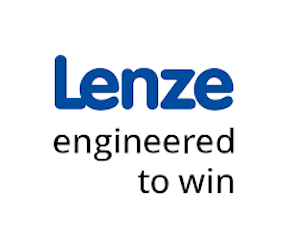 AERZEN, Germany — October 1, 2025 — At the world’s largest trade fair for textile and apparel technology, ITMA Asia (October 28-31, 2025 in Singapore), Lenze will be presenting innovative automation solutions for the textile value chain in Hall 7, Stand B201. The focus will be on energy-efficient drive packages, modular machine concepts and scalable software solutions – developed for mechanical engineers and end users who rely on sustainable technologies. Lenze has been a reliable partner to the textile industry for over 77 years.
AERZEN, Germany — October 1, 2025 — At the world’s largest trade fair for textile and apparel technology, ITMA Asia (October 28-31, 2025 in Singapore), Lenze will be presenting innovative automation solutions for the textile value chain in Hall 7, Stand B201. The focus will be on energy-efficient drive packages, modular machine concepts and scalable software solutions – developed for mechanical engineers and end users who rely on sustainable technologies. Lenze has been a reliable partner to the textile industry for over 77 years.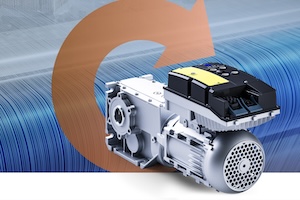 The Motor Drive System IE5/IE6 from Lenze meets all current and future energy efficiency standards and offers an excellent price-performance ratio. Thanks to the innovative control process, many applications for which servo systems are traditionally used, such as goods transport in the finishing area, can be solved without external feedback. This makes the system particularly robust, low-maintenance and cost-efficient – ideal for the requirements of the textile industry.
The Motor Drive System IE5/IE6 from Lenze meets all current and future energy efficiency standards and offers an excellent price-performance ratio. Thanks to the innovative control process, many applications for which servo systems are traditionally used, such as goods transport in the finishing area, can be solved without external feedback. This makes the system particularly robust, low-maintenance and cost-efficient – ideal for the requirements of the textile industry.


